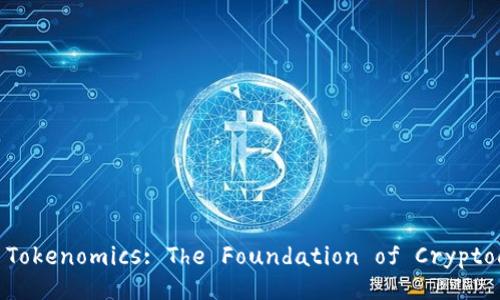在现代网络应用中,Token(令牌)被广泛用于用户身份验证与授权。在用户发送请求时,Token通常被用于确认该请求的...
Tokenomics, a term derived from “token” and “economics,” refers to the study of the economic system surrounding a cryptocurrency or token. It encompasses the way tokens are created, distributed, and utilized within a blockchain ecosystem. Understanding tokenomics is essential because it helps investors, developers, and users evaluate the potential success and sustainability of a cryptocurrency project.
In the world of digital assets, a well-structured tokenomics model can drive utility, create value, and ensure that stakeholders are incentivized to contribute to the ecosystem. This article provides an in-depth exploration of tokenomics, its components, and its significance in the larger context of cryptocurrency and blockchain technology.

To fully grasp tokenomics, it's crucial to understand its key components, which include token supply, distribution, utility, and governance.
The total supply of tokens in circulation is a fundamental element of tokenomics. There are generally two types of supply models: fixed supply and inflationary supply. A fixed supply means there will only ever be a certain number of tokens created, which can create scarcity and potentially increase value over time. Conversely, inflationary models allow for a continually increasing number of tokens, which can help maintain a stable ecosystem but may dilute value.
Token distribution determines how tokens are allocated among different participants in the ecosystem, including founders, advisors, early investors, and the general community. Fair and transparent distribution helps prevent whale effects (where a few individuals hold large amounts of tokens, skewing the ecosystem) and encourages widespread participation.
Utility defines how tokens can be used within the ecosystem, whether for governance, transactions, staking, or accessing services. A clear utility helps establish a demand for the token, as users will need it for various functions within the platform. Tokens without designated utility may struggle to gain traction and user engagement.
Governance structures dictate how decisions are made within the ecosystem, such as protocol upgrades or fund allocation. Many projects implement decentralized governance models, allowing token holders to vote on proposals, fostering community engagement, and ensuring that the network evolves in alignment with the users' desires.
Tokenomics is more than just a buzzword; it plays a critical role in the success of any cryptocurrency project. A well-designed tokenomics model can enhance trust, foster community involvement, and ultimately lead to sustainable long-term growth.
In the highly speculative cryptocurrency market, trust is vital. A project with clear and fair tokenomics can instill confidence among investors and users. Transparency in token supply and distribution creates an environment where stakeholders feel secure about their investments, ultimately driving adoption.
The relationship between a token and its community is crucial. Tokenomics that incentivize participation through rewarding users—either through staking, governance voting, or other mechanisms—can lead to a loyal and engaged community. This can spur further innovation and help the ecosystem grow.
A sustainable economics model is essential for the longevity of a cryptocurrency project. Tokenomics strategies that promote utility and discourage speculation can help stabilize token value and ensure continuous demand. Additionally, implementing deflationary mechanisms or utility-driven features can further enhance economic sustainability.
Investors often scrutinize tokenomics before committing funds to a project. A strong token economy can differentiate a project from competitors and attract more substantial investments. Features like limited supply, diversified utility, and community governance can create a compelling proposition for prospective investors.

Evaluating the tokenomics of a cryptocurrency project involves examining several key factors:
First, assess the total supply and how it is governed. Understanding whether the supply is fixed or inflationary can give insights into long-term value prospects. Additionally, investigate the distribution of tokens. A fair distribution model that avoids concentration among a few holders can lead to better stability and community involvement.
Second, look into the utility of the token. What can the token be used for within the ecosystem? Does it have practical applications that encourage usage? Projects with clear utility are more likely to succeed and maintain demand.
Lastly, consider the governance model. Is the project decentralized, allowing token holders to influence decisions? Community governance can foster trust and engagement, further bolstering the ecosystem's health.
Poorly designed tokenomics can lead to a multitude of risks for both the project and its users:
One of the primary dangers is inflationary pressures that can dilute the token's value, leading to disillusioned investors. If too many tokens are produced without corresponding demand, existing holders could find their investments significantly diminished.
Another risk involves the potential for centralized control. When a small number of individuals hold a large percentage of tokens, it can create a centralized power dynamic that negates the benefits of decentralization. This can lead to manipulative practices that hurt the broader community.
Additionally, a lack of clear utility can render a token obsolete. If users find little reason to hold or use the token, it can lead to reduced demand and lower overall interest in the project.
Tokenomics directly impacts price volatility through the mechanisms of supply and demand:
If a project has a high inflation rate, an excessive influx of new tokens can lead to oversupply, creating downward pressure on prices. Conversely, limited supply can create scarcity, which often results in price appreciation as demand increases.
Utility also plays a crucial role in price stability. If a token is used within the project for essential functions, it can create consistent demand that underpins the price. On the other hand, tokens without significant utility may experience heightened speculative trading, leading to increased volatility.
The market's perception of a tokenomics model also influences its price. A project with transparent and fair tokenomics is likely to inspire more confidence, resulting in reduced volatility due to stabilized buying and selling pressures.
Regulatory changes can profoundly affect the tokenomics of cryptocurrency projects:
Regulations may impose restrictions on token sales, requiring projects to alter their supply and distribution models. This can impact existing investors and affect market perception. For example, stricter KYC (Know Your Customer) regulations may limit token distribution and reduce overall participation from the global community.
Moreover, changes in regulatory perspectives towards utility tokens can redefine how projects structure their value propositions. If a token is classified as a security, it may be subject to different rules that can impact its distribution and governance.
Additionally, regulations can influence investor sentiment and market behavior, leading to changes in demand for tokens. Projects that adapt swiftly and adhere to legal guidelines may be better positioned within the market, while those that fail to comply could face legal challenges that cripple their tokenomics.
As the cryptocurrency landscape continues to evolve, understanding tokenomics becomes increasingly essential for anyone involved in the space. A well-structured tokenomics model lays the foundation for a successful project, driving value creation and fostering community engagement.
By considering aspects like token supply, distribution, utility, and governance, stakeholders can make informed decisions and contribute to the growth and sustainability of the ecosystem. As the market matures, those projects that prioritize robust tokenomics will likely lead the way in innovation and long-term success.